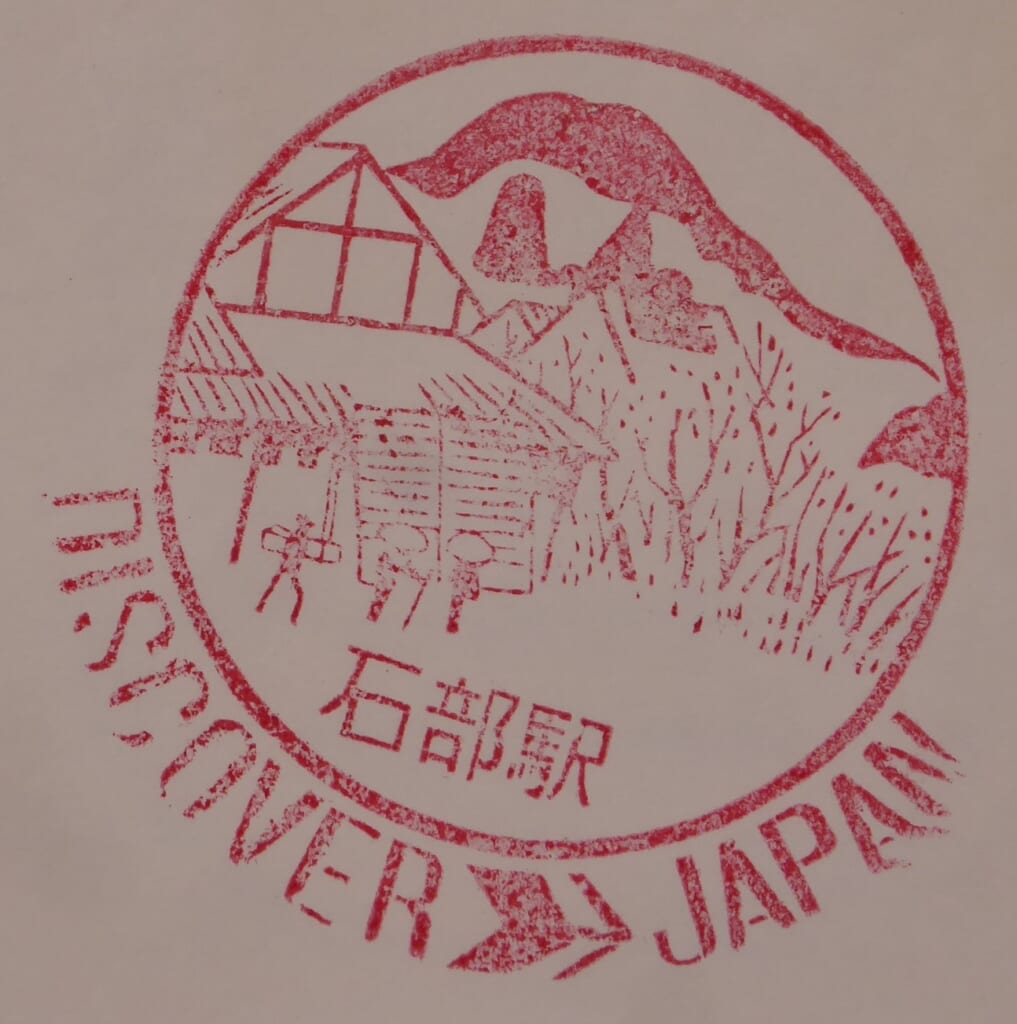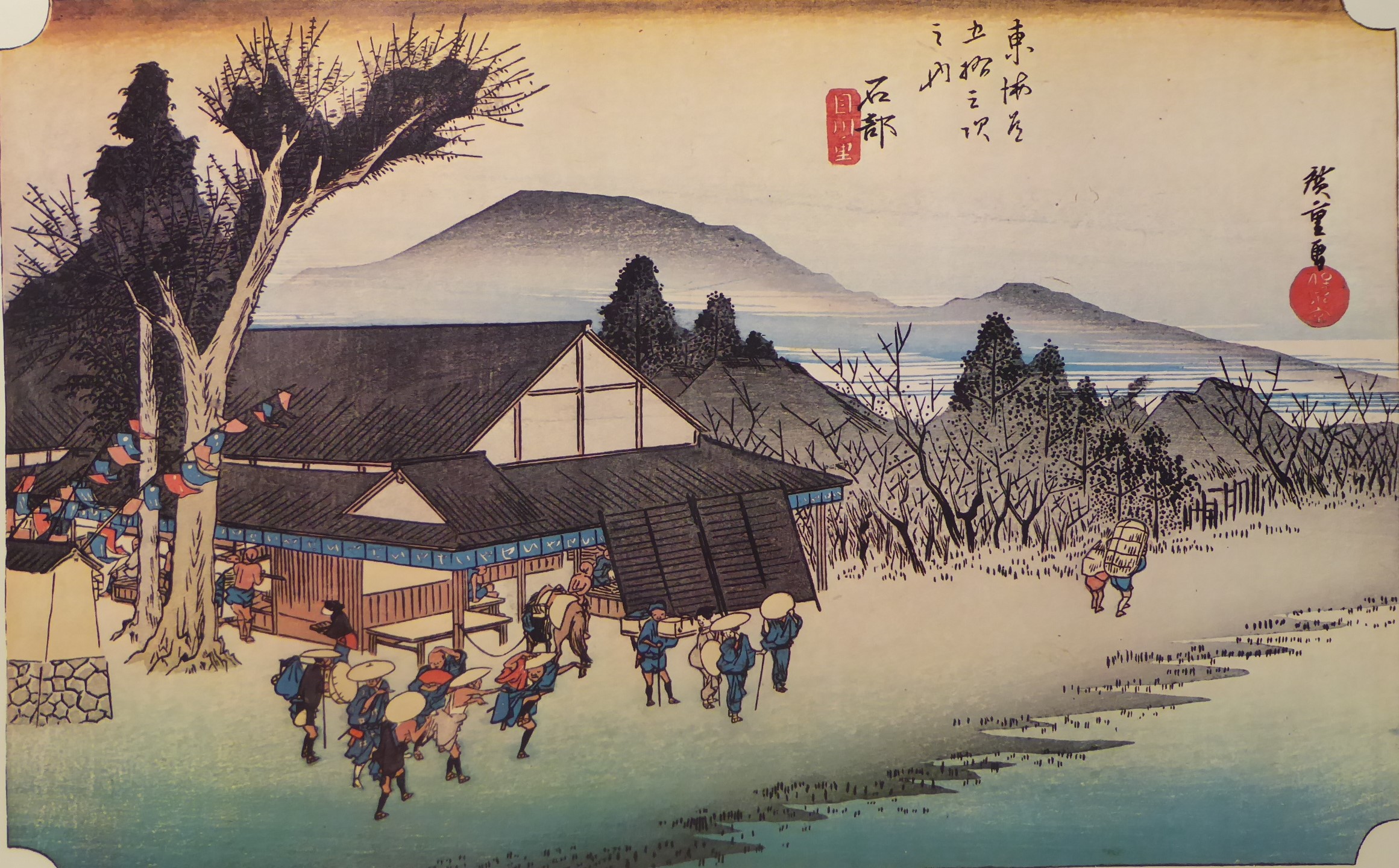Commentary on the 53 Stations of the Tokaido 52 Ishibe
11.8km from Kusatsu to Ishibe, 51.7km from Kyoshi to Mizuguchi, 13.7km to Mizuguchi, 35° 00′ 36″ north latitude, 136° 03′ 16″ east longitude
Ishibe-juku is This is the 51st post station on the 53 stations of the Tokaido, located in Koka District, Omi Province. The current location is Konan City, Shiga Prefecture. Ishibe-juku was one day away from Kyoto, and was called “Kyoto-tachi Ishibe-juku.”
There were 458 houses lined up on both sides of the road within the post station,
including two honjins (Kojima honjin and Sandaiji honjin) and 32 inns.
In the center was a wholesale store and a bill store where the innkeepers were stationed.
The rest areas between post stations are called tate. There was a shop there that sold specialties.
The teahouse here is Dengaku Chaya, and it is said to be the birthplace of tokoroten, which is eaten by pouring brown sugar syrup over it.
As there were no preservation activities along the old highway, the post town does not have the atmosphere and streetscape of an old post town.
In Konan City, there is the Tokaido Ishibe-juku History and Folklore Museum, which displays historical materials such as guestbooks.
There is a theme park called Ishibe-juku that opened in 1985 in Ameyama Sports Park in Konan City, Shiga Prefecture.
Once you pass through the entrance gate to this theme park, you will be greeted by a townscape that recreates inns, teahouses, shops,
farms, and more.
The building, with its narrow frontage and long lines,
is a faithful reproduction of an “eel bed.” It will give you the illusion that you have traveled back in time to the Edo period.
However, this theme park is said to be probably the least visited theme park in Japan.
The Ishibe-juku History and Folklore Museum exhibits historical materials of the post town,
such as the 53 Stations of the Tokaido, the feudal lord’s Ajiro palanquins, checkmarks, and inn registers.
It has been recreated as a 1/20th scale model based on drawings of Kojima Honjin, which was under the direct control of the Shogunate.
①The Hoeido version'' depicts the teahouse in the position. The store's noren curtain has the consecutive lettersIseya” written on it.
This shop is “Iseya,” which sells dengaku in Megawa no Sato, located between Ishibe and Kusatsu.
Eating local specialties has always been a fun part of traveling.
The shop is lively, and it’s really funny to see a man in a group of people passing by stopping a woman in front of him.
② “Gyosho version” This is a composition with two pine trees in the center and Umako and horses on the left and right equally spaced.
The traveler in the center is talking to Umako.
➂ “Reisho version” Looking down from around the second floor of the inn. The three pine trees and stone lanterns on the left are accents.
④ “Hokusai version” It seems to mainly express the expression of a traveler.
⑤ “Travel Image” A simple townscape near Ishibe-juku
⑥ “Stamp image” This is a stamp of Ishibe station. I stamped this stamp in the evening and will now move to Mizuguchi. I’m exhausted at this point.
Ishibe-juku was one day away from Kyoto, and was said to be “Staying in Ishibe in Kyoto.
” However, at that time there was only one inn available, so I was unable to stay there. So I decided to go to an inn in Minakuchi.
Currently, I am regretting that I should have stayed at Kusatsu-juku.
Hoeido version

Gyosho version

Reisho version
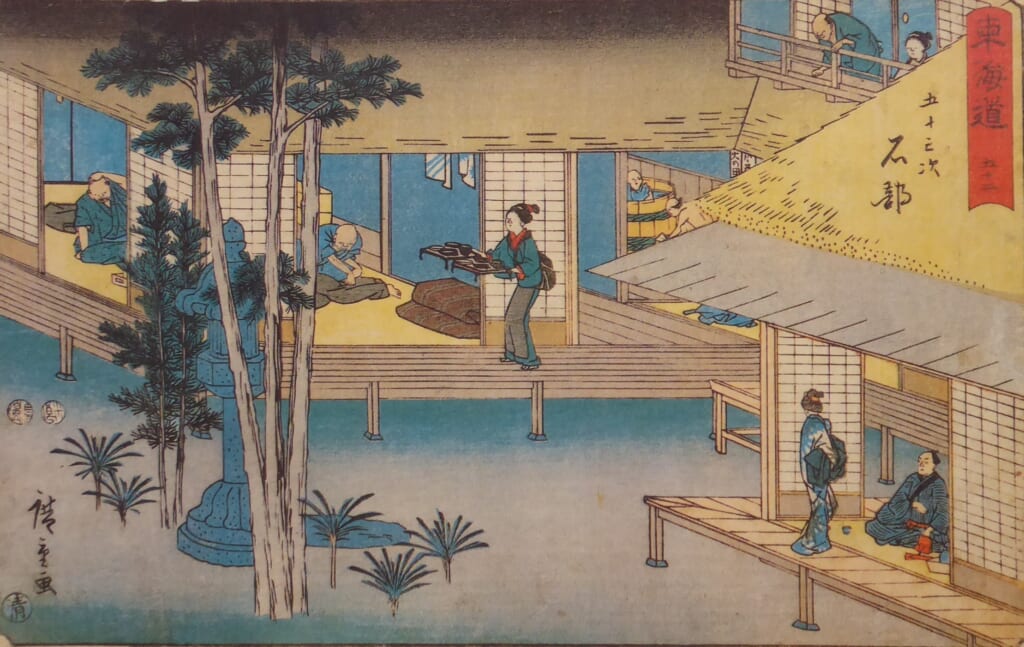
Hokusai version
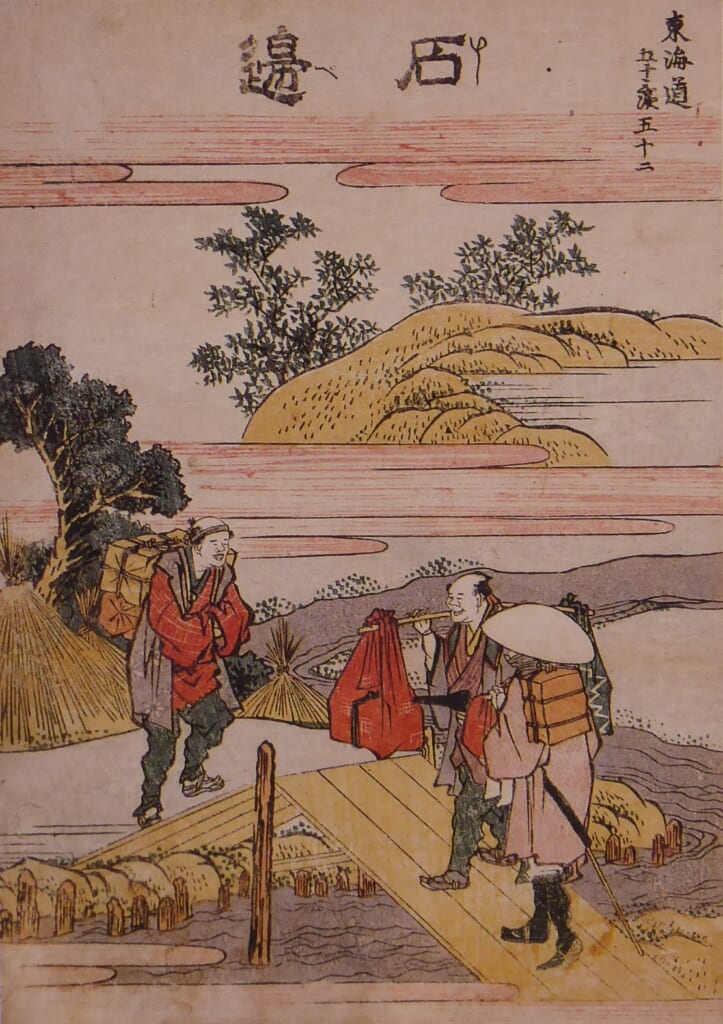
Travel Image
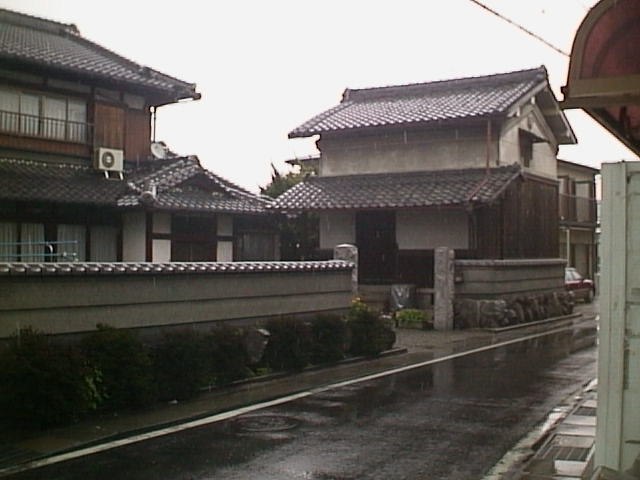
Stamp image
